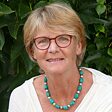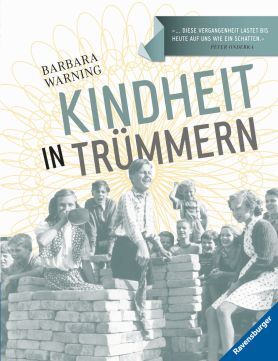Barbara Warning
Kindheit in Trümmern
[Shattered childhoods]
- Ravensburger Buchverlag
- Ravensburg 2015
- ISBN 978-3473553754
- 192 Pages
- 12 Suitable for age 13 and above
- Publisher’s contact details
Barbara Warning
Kindheit in Trümmern
[Shattered childhoods]
Sample translations
Shattered childhoods
No one can better caution us again war than those who experienced it first hand. The narratives Barbara Warning shares with us are dramatic, horrific and sometimes also hopeful stories of childhood. These children were born before or in the midst of the chaos of the Second World War. They endured hunger, bomb hail and the fear of death. Many of them had to flee with nothing but the clothes they wore, with unfathomable suffering in plain view. Others survived in bombed out cities. And all of them still carry the wounds of their childhood today, wounds that often only surface when these people reach retirement age. Anyone who reads these accounts can certainly imagine that children living through war today will still be suffering from the traumas of their childhood 50 years from now.
The fate of each child is unique and leaves behind very personal scars and suffering. And yet there are a great many similarities. Barbara Warning has carefully placed the life stories of the war children, and thus the reality of that past time, in different groups. She reports about children who went missing, about life in the occupation zones and camps for displaced persons, about the missing fathers or what it was like to learn amidst ruins. Naturally there are overlapping elements, but that is not important. It is critically important to her that finally, after much processing of the Holocaust, the suffering of the Germans—and especially the children—is talked about. And that today’s young people take away the message: “Never again war!” That should be universal and timeless!
This did not, however, become a depressing book, in great part due to the lively presentation and design used in its creation. Barbara Warning relates the stories of “her” war children with objective distance, yet sensitively and with great sympathy. The subjects are often quoted, expressing themselves in their own words. The individual stories are complemented by explanations and brief texts providing details on certain subjects. Many personal documents and harrowing photographs are included, as well as a wise foreword and an historical overview of the period from 1932 to 1990.
By now, the third post-war generation is being born in Germany, children who take for granted unhindered and friendly interactions with their European neighbours. But peace is anything but self-evident; in fact, it is a luxury. It requires hard work in opposing religious prejudices and cultural classifications, because only the knowledge of how deeply horrifying war is can prevent us from jeopardizing peace. So when there is an opportunity to hear the stories of those who experienced the war, but have never talked about it, we should take advantage of it, regardless of whether the war took place in Europe, in South America, or in the Middle East.
Translated by Tammi Reichel

By Sylvia Schwab
Sylvia Schwab is a radio journalist with a special interest in literature for children and teenagers. She serves on the jury for the monthly ‘Best 7’ list of books for young readers produced under the aegis of Deutschlandfunk and Focus, and works for Hessischer Rundfunk, Deutschlandfunk and Deutschlandradio-Kultur.
Publisher's Summary
Does time really heal all wounds? 70 years after the end of
the Nazi dictatorship and World War II, contemporary
witnesses recall their childhood experiences between 1939
and 1955.
How did they survive the hardships of flight and
displacement? How did families organise their everyday
lives in bombed-out cities? How did they manage to procure
the bare necessities to survive in those years of need and
deprivation?
In interviews and reports, contemporary witnesses describe
their experiences in detail. The deep marks war and
deprivation have left on those who passed through the
most formative years of their lives during this difficult time
become apparent. History comes to life in individual stories,
while the generational perspective makes events
comprehensible for young readers in particular. In addition,
the book also opens readers' eyes to the fate of today's
children of war and reminds us of the importance of
working towards a more peaceful world.
(Text: Ravensburger Buchverlag)
